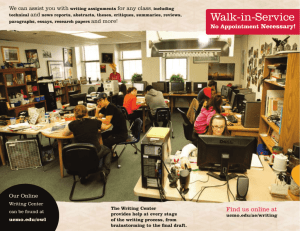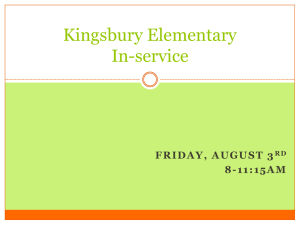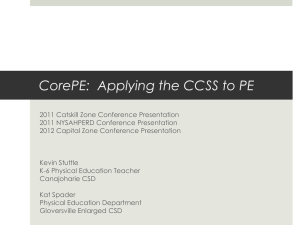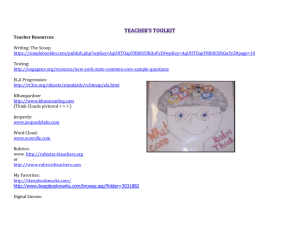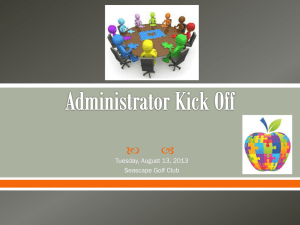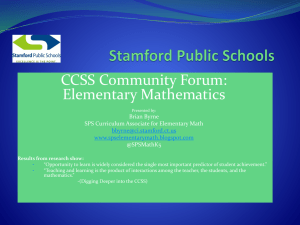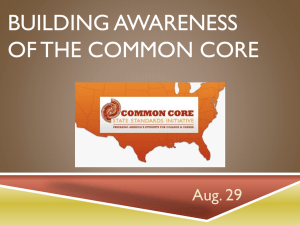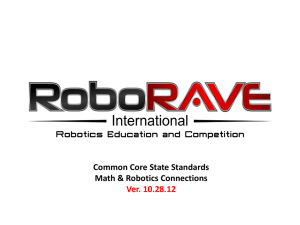Common Core Standards Overview Presentation @ 2012 MARE
advertisement
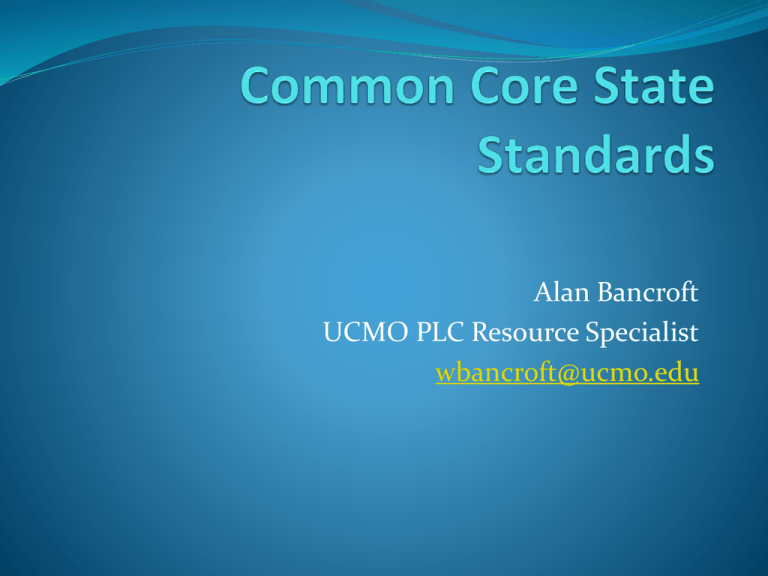
Alan Bancroft UCMO PLC Resource Specialist wbancroft@ucmo.edu AGENDA Background information about the CCSS Implications for assessment Overview of the ELA and mathematics CCSS What’s the Buzz? Turn to your neighbor and share at least one thing that you have heard about the Common Core State Standards that you liked. Common Core State Standards With your table group list the following on the back of your handout. What questions do you have about the CCSS? 2. What have you heard about the CCSS that bothers you? 1. Common Core State Standards A voluntary, state-led effort—48 states, 2 territories, and D.C. originally signed on to the initiative Committed to developing a common core of state standards for proficiency in English language arts and mathematics for grades K-12 • College and career readiness for all • A mobile population • 1 set of standards/not 50 • Sharing of resources among districts/states • Textbooks written for all states/not just the big ones • Internationally benchmarked to high performing nations Challenges • Dramatic transitions from state to more rigorous national standards • Veteran staff not as prepared as new will be for content expertise • PD focused on content rigor • Implementation timeline for districts, funding, and new assessments Prioritization • Mike Schmoker, “schools will only be able to teach about half of the standards” • Douglas Reeves, “number of standards in CCSS remains too high” • Power Standards (ELO’s) more important than ever. English Language Arts key points Reading (10 strands) Staircase of increasing complexity and comprehension so that as students advance they will gain more from their reading. Must have a range of classic and contemporary literature to use texts to build knowledge, gain insights, and explore possibilities. Writing (10 strands) Must have ability to write arguments. Short and long term research emphasized. Speaking and Listening (6 strands) Must gain, evaluate, and present complex information through listening, speaking, and media. Focus on one-on-one, small group, large group, and presentations. Language (6 strands) Students will determine word meaning, nuances of words, and steadily expand their repertoire of words and phrases. Will prepare students for real life experiences in life and college. They must make informed, skillful choices in expressing themselves. Design and Organization Standards for Mathematical Practice Carry across all grade levels Describe habits of mind of a mathematically expert student Standards for Mathematical Content K-8 standards presented by grade level Organized into domains that progress over several grades Grade introductions give 2–4 focal points at each grade level Mathematics key points Solid foundation in whole numbers, addition, subtraction, multiplication, division, fractions and decimals provided in k-5. Provides guidance to k-5 teachers on how to teach geometry, fractions, and negative numbers maintaining a continuous progression from grade to grade. Make sure students learn both procedural and conceptual skills for all critical information. Students who have mastered k-7 will take algebra as an eighth grader. High school standards have students practice applying mathematical ways of thinking to real world issues and challenges. High school standards rigorously prepare students for college and careers. Uses mathematical modeling to link classroom math and statistics to everyday life, work, and decision making. Professional development needs Prioritizing the CCSS Unwrap all Priority standards in Math and ELA. Must increase content area expertise in all areas. Research based instruction strategies Differentiation, enrichment, RTI, ELL, Sp. Ed. Rigorous curriculum units and lessons Performance tasks to engage learners Assessment CCSS rigor should raise MAP scores Must crosswalk CCSS, GLEs, CLEs, and MAP Start preparing now for 2014/2015 CCSS test implementation. Informational writing across all disciplines Authentic performance tasks and projectbased learning across all disciplines Things to change The way teachers plan and deliver instruction Deeper, more systematic professional development Nonfiction writing by every student in every class Literacy has to be a shared responsibility by every staff member Thank You Alan Bancroft UCMO PLC Resource Specialist wbancroft@ucmo.edu Susan Feeback UCMO PLC Resource Specialist feeback@ucmo.edu
